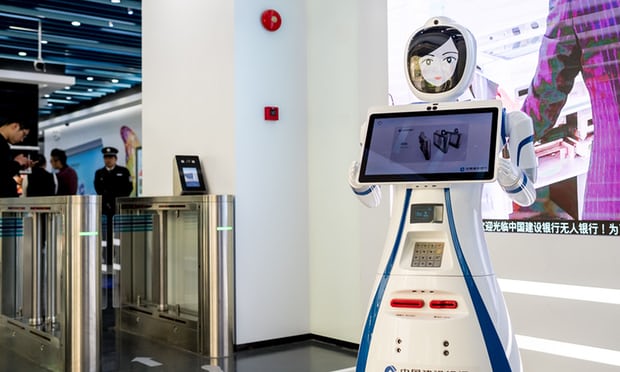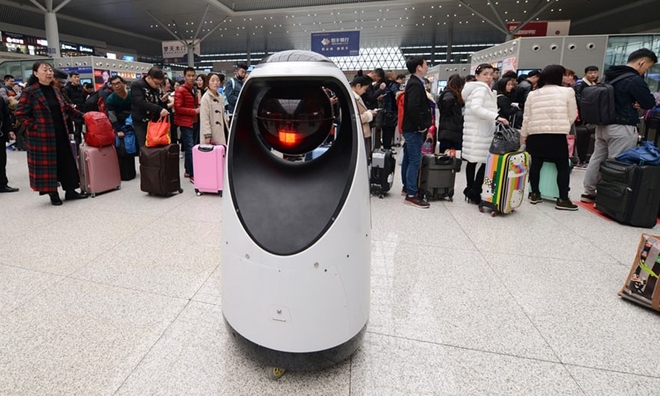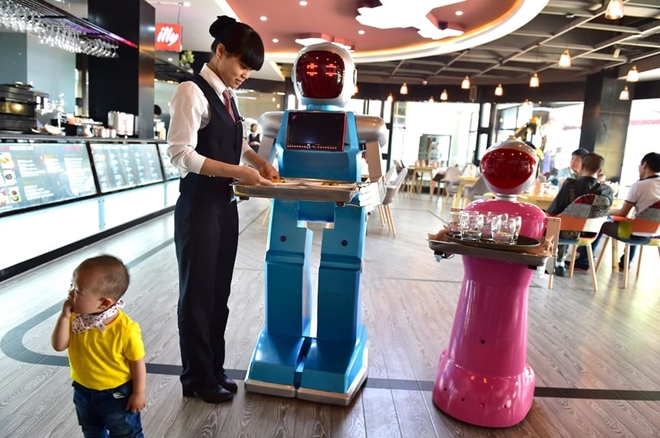Inside Shanghai's robot bank: China opens world's first human-free branch
Xiao Long, or “Little Dragon”, is not your typical employee – she’s a robot at China’s first fully automated, human-free bank branch.
As guardian of the bank, she talks to customers, takes bank cards and checks accounts (she comes complete with a PIN pad) and can answer basic questions. After a quick initial chat with Xiao Long, customers pass through electronic gates where their faces and ID cards are scanned. On future visits, facial recognition alone is enough to open the gates and call up customer information.
 |
| Pay pal … Xiao Lang, or Little Dragon, at the China Construction Bank on Jiujiang Road, Shanghai. Photograph: Imaginechina/Rex/Shutterstock |
Inside, automated teller machines help with services such as account opening, money transfer and foreign exchange. A second robot waits inside the barriers, and there is a VR room and video-link should customers want to talk to a mortal.
The bank is rather low on customers, who in the main appear rather ambivalent. One man in his 30s shrugs that he does most of his banking online anyway, and avoids coming into branches – though at least he didn’t have to queue.
Robot waiters, robot guards |
| A police patrol robot at Zhengzhou East railway station. Photograph: VCG via Getty Images |
Robots are handling more and more aspects of everyday life in Chinese cities. They have been deployed in train stations for security purposes; robot security guards at Zhengzhou East railway station are programmed to scan travellers’ faces and respond to common questions.
The chief executive of Chinese e-commerce giant JD.com recently predicted that robots will eventually replace human workers in the retail industry, with China’s unmanned retail sector expected to triple in size to 65bn yuan (£7.5bn) by 2020, according to iResearch.
Robots are being used to cook – both in restaurants and industrial kitchens – and a video of an entirely automated dumpling factory went viral on Chinese social media last year.
Robot waiters have been a fad for a number of years, with restaurants keen to draw customers with novel experiences, as well as saving on staff costs. Robotic waiters can be frustratingly slow for hungry diners though. Most move along pre-programmed tracks, and for some restaurants they have proved more trouble than they’re worth. |
| Novelty value … a couple of AI waiters, Little Blue and Little Peach, at a robot-themed restaurant in Yiwu. Photograph: VCG via Getty Images |
But the rise of China’s robot industry is a core part of Beijing’s economic ambitions. Beijing’s Robotics Industry Development Plan is a five-year programme that targets the production of at least 100,000 industrial robots a year by 2020, partly to reboot the country’s ailing manufacturing sector.
“In AI and robotics, China clearly is interested in emerging as a global leader,” says Professor Yu Zhou at the department of earth science and geography at Vassar College. “Moving up the value chain is what is really behind China’s move into robots. Working wages have been increasing and there have been shortages of low-level labour.
“You have to replace this labour, and automation and robots became a natural area to look into. Robots are really seen as an upgrade – better products, more efficient and cheaper.”

